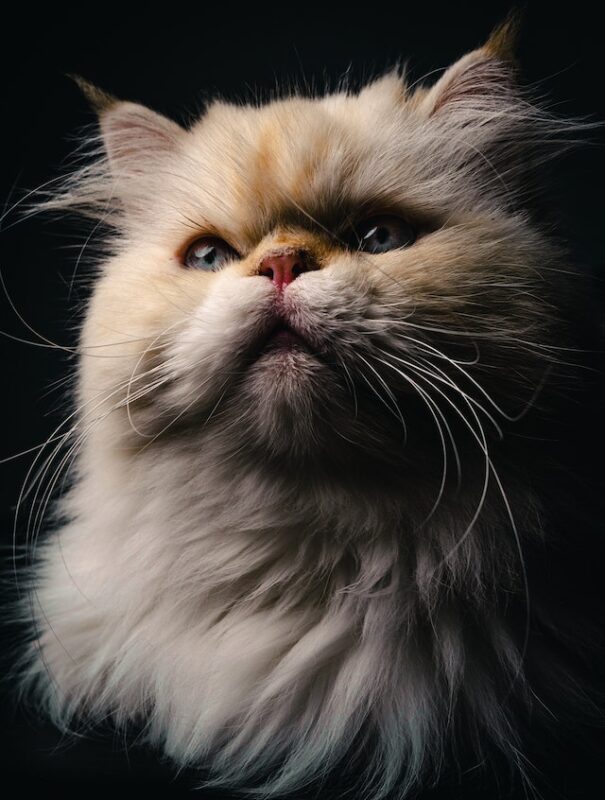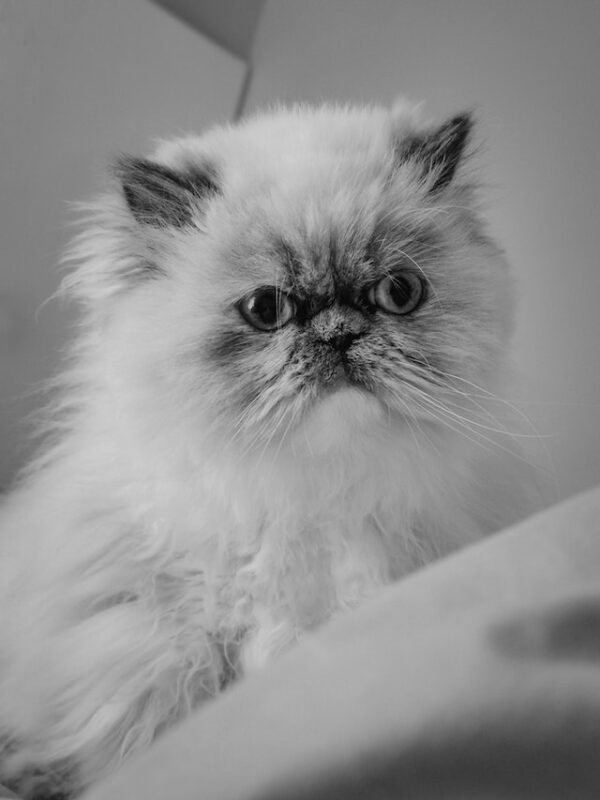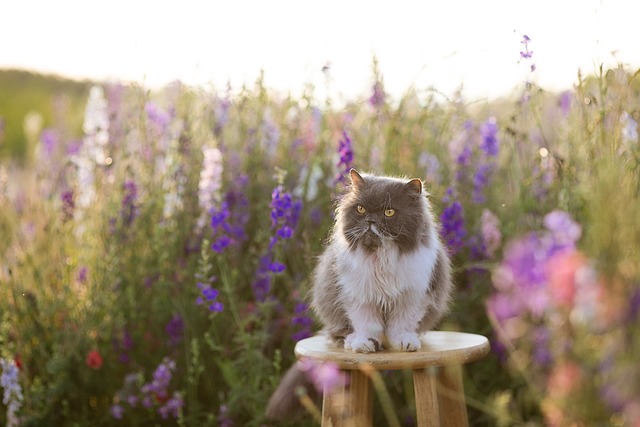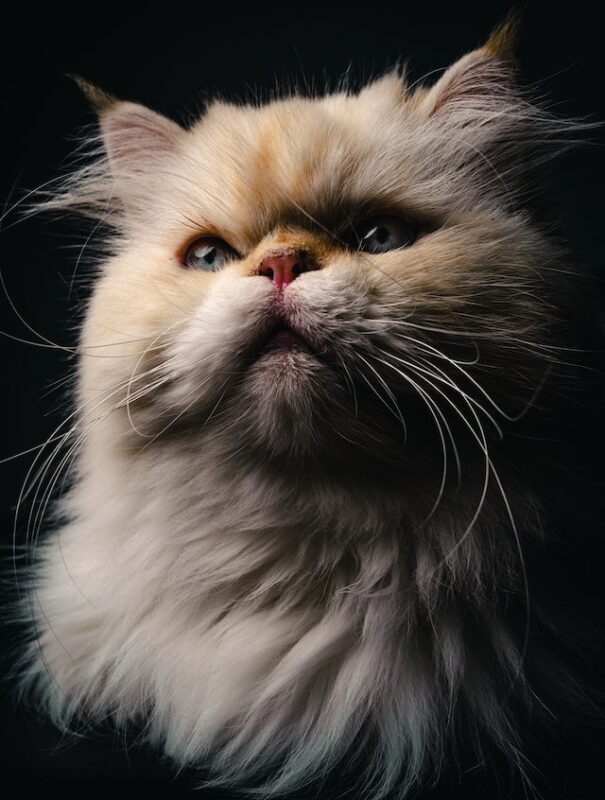Persian Cat Costs: It is More Than Just Initial Fees
Posted: 06/01/2025 | BY: Jenna Bruce | Categories: Cat , Health problems , Pet care
There are beautiful cats, and then there are Persians. This breed is known for their big eyes, soft luxurious fur, and gentle temperament. It’s probably why they are one of the most popular cat breeds around and often used in cat food commercials and advertisements. If you are thinking of bringing a Persian into your life, you’re probably wondering about Persian cat costs.
There’s no doubt this gorgeous cat comes with a hefty price tag. But when it comes to costs, there are other things you need to consider besides just the initial buyer’s fee. Let’s dive in so you can realistically understand the financial commitment you are making with Persian cats.

How Much is a Persian Cat?
Did you know that Persian cats are in the top ten list of most expensive feline breeds? So just how much can you expect to pay for a Persian? There are a variety of factors that come into play regarding the cost of a Persian cat. In general, you can expect to pay anywhere from $1,000 all the way up to $5,000.
It’s important to understand the factors that affect the price of Persian cats. Whether you want to buy a Persian as a pet, want a show cat or are considering becoming a breeder yourself, it’s imperative to consider the following price factors:
Pedigree and Bloodlines
One of the biggest factors that influence Persian cat costs is the pedigree and bloodline. Cats that have been bred from champion bloodlines (or pedigrees with multiple generations of champion cats) will obviously be very expensive. Because these cats are show quality, they will have the most desirable traits such as a thick, luxurious coat and a wonderful temperament. And you’re going to pay for these desirable traits!
Color & Coat Type
Some Persian kittens will have a bigger price tag because of their coat color and type. Some colors like silver, black and white are more popular, and hence will cost you more. Then there are those rare coat types, such as the bi- and tri-color, and those can be even MORE expensive!
Age and Gender
Other factors that impact Persian cat costs are age and gender. You’ll pay more for a young kitten than you will an adult cat. Female cats are usually more expensive as they are often used for breeding. Intact male cats will cost more than neutered male Persians for the same reason.

Health and Vaccinations
Persians that have been screened for certain genetic health conditions and received all of their necessary vaccinations will cost more. In addition, if you are not interested in breeding Persians yourself and would prefer to buy a cat that has already been spayed or neutered, you can also expect to pay more.
Breeder
One of the BIGGEST reasons why you should never look for a “cheap” Persian cat is because it often reflects the breeder’s expertise, level of care and reputation in the industry. A professional breeder who invests much time and effort into breeding healthy cats with desirable cats should charge more. Those breeders who spend more to ensure their cats are fed a proper diet, housed well and get the very best medical care need to recoup their costs.
It’s for these reasons you should absolutely never look for Persian kittens on Craigslist or or Facebook Marketplace. If someone is selling a Persian kitten for $300, you can guarantee they are not a reputable breeder and that poor kitten may not be healthy. Always do your homework and look for quality breeders. A quality breeder will be happy to answer any questions you have and will want you to come see where the cats are bred.
These are some of the major factors that will impact the price you will pay to buy a Persian cat. But keep in mind that Persian cat costs don’t end here. You’ve also got to factor in things like food, litter, toys, bedding and veterinary costs. These can all add up, particularly vet care. With this in mind, let’s now take a look at some of the most common health conditions for Persian cats.
Common Persian Cat Health Problems
If you’re thinking about becoming a pet parent to a Persian cat, it’s important to understand the potential health issues that can crop up. This way you know what symptoms to look for as well as potential cost of care.
Heart Disease
The most common form of heart disease experienced by Persians is called hypertrophic cardiomyopathy (HCM), which is a thickening of the heart muscle. This is one of the genetic tests a good breeder does on their cats. Unfortunately, not all forms of HCM are detectable and even healthy kitties may develop the disease down the road.
Symptoms of HCM in cats to watch for include:
- Loss of appetite
- Lethargy
- Weak pulse
- Difficulty breathing
- Shortness of breath, crackling sounds when breathing
- Abnormal heart sounds
- Inability to exercise or exert themselves
- Sudden hind-limb paralysis with cold limbs (because a clot has been thrown)
- Bluish discoloration of the pads and nail beds (due to lack of oxygen flow)
- Collapse
- Sudden heart failure
Any of these symptoms requires a trip to the vet, who will most likely refer you to a veterinary cardiologist who will perform various diagnostic testing. The cost to diagnose this disease can go up to $1,500 and monthly medications can be around $300.

Brachycephalic Syndrome
This syndrome affects cats with short noses and flat faces. Persian cats have wonderful faces, but those faces can cause a bit of trouble. Many cats affected with this syndrome have difficulty breathing and are more prone to heatstroke.
According to Embrace pet insurance, the cost of treating brachycephalic syndrome depends on the severity of the disease and what treatments are used to relieve the airway obstruction. In general, treatments will run between $200 and $1,500.
Polycystic Kidney Disease
This disease was actually first described in Persians. Affected cats are born with tiny cysts inside their kidneys and, over time, these cysts begin to get bigger and bigger. Eventually, they cause damage to the kidneys, negatively impacting function.
Any kind of kidney disease can be costly to treat. In fact, a Nationwide survey found that kidney disease was the second-priciest condition, averaging $649 a year to treat.
Dental Disease
Sadly, dental disease is common among all breeds of cat. The condition easily develops when cats don’t have their teeth and gum line brushed regularly. Not only can dental disease be very painful to a cat, but if not caught and treated, it can lead to bad bacteria spreading throughout the body, damaging organs and leading to heart, liver and kidney disease. According to Veterinary Practice News’ website, treating dental disease can cost, on average, between $300 and $1,300.
These are just a handful of the health conditions your Persian cat may be prone to. As you can see, they also come with their own price points. It’s important to understand the full financial implications of cat ownership so you can be a responsible pet parent.

Pet Insurance Can Help with Some Persian Cat Costs
A health insurance plan for your new Persian kitty ensures you can provide the very best care, no matter what sort of accident or illness may strike. Take two minutes to get a free, customized quote.
References:
- https://www.petcoach.co/cat/condition/hypertrophic-cardiomyopathy/ “Hypertrophic Cardiomyopathy in Cats”
- https://www.cnbc.com/2018/04/09/common–and-costly–conditions-that-can-send-your-pet-to-the-vet.html “YOUR MONEY – 5 common — and costly — conditions that can send your pet to the vet”
- https://www.veterinarypracticenews.com/cats-and-toothache-vet-costs/ “Cats and Toothache Vet Costs”
- https://www.embracepetinsurance.com/health/brachycephalic-syndrome “Brachycephalic Syndrome”
Disclaimer
The information contained on this blog is intended for informational and educational purposes only and should not be construed as medical advice. It is not a substitute for professional veterinary care. Always consult with your veterinarian before making any changes to your pet's health care or treatment plan.
The authors of this blog are not veterinarians and do not claim to be experts in pet health. The information provided here is based on our own experiences and research, as well as information from reputable sources. However, we cannot guarantee the accuracy or completeness of this information.
We encourage you to do your own research and consult with your veterinarian before making any decisions about your pet's health.
Previous post
Benefits of Regular Vet Visits for Your DogNext post
11 Benefits of Pet InsuranceCompare top pet insurance providers plans.
Enter your dog’s age in years and months to calculate their age equivalent to human years.
Calculate your dog’s ageEnter your cat’s age in years and months to calculate their age equivalent to human years.
Calculate your cat’s age